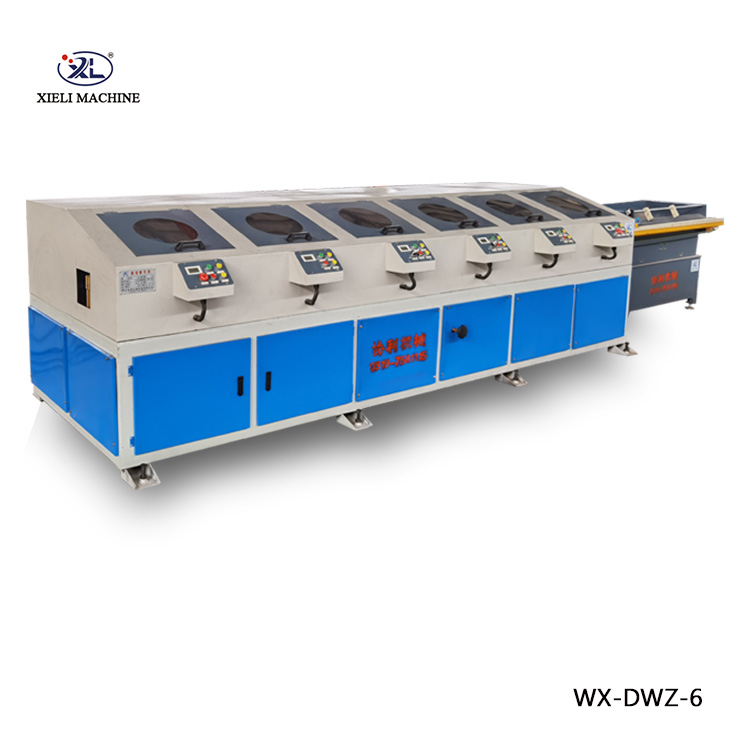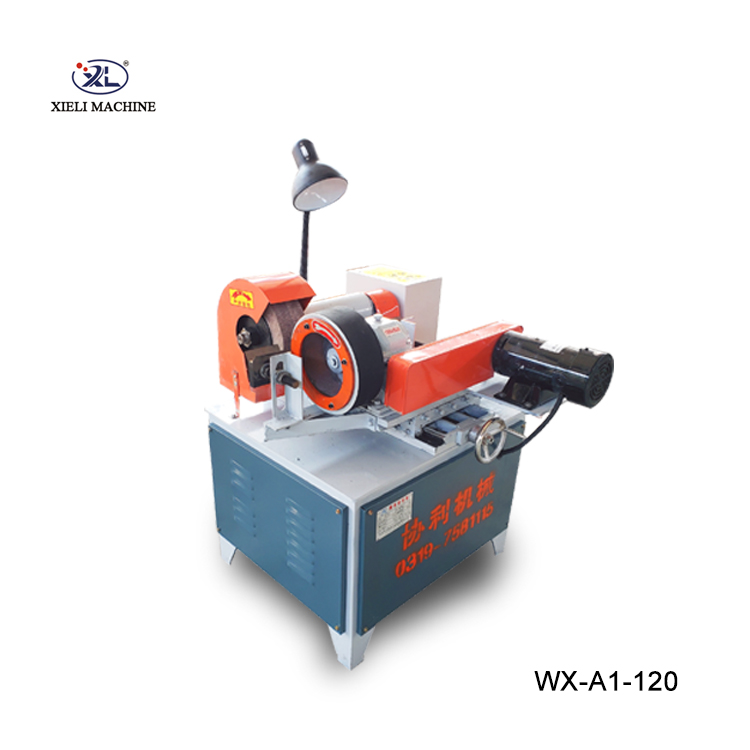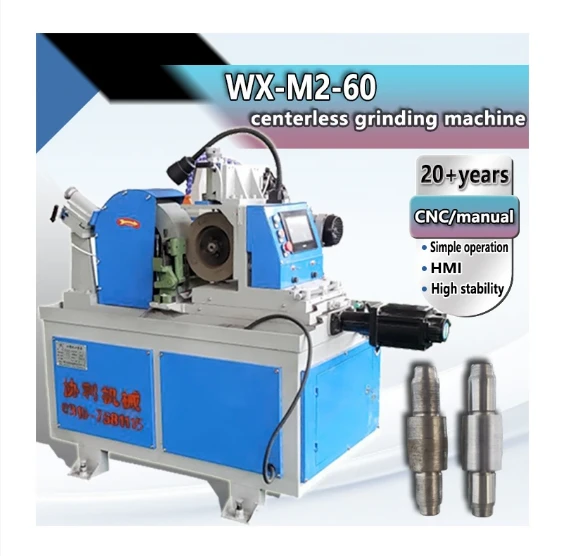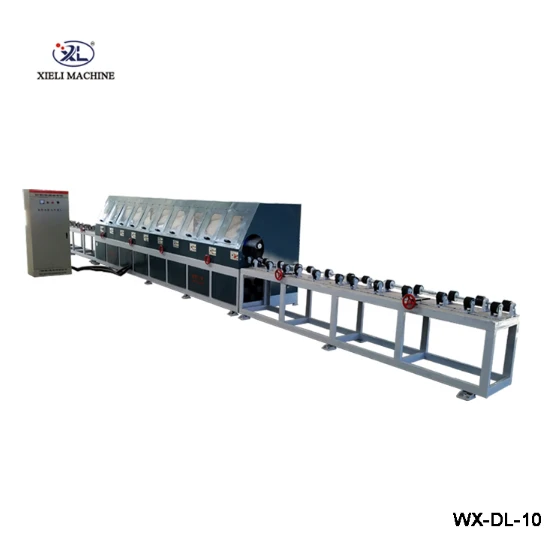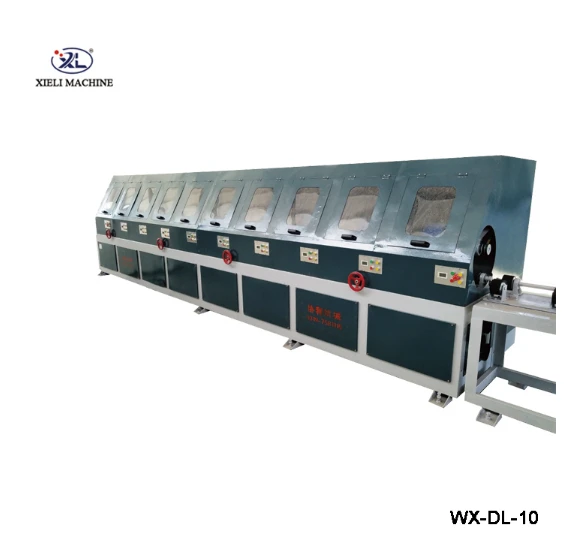Precision Grinding in Modern Manufacturing: An Overview
In today's highly competitive industrial landscape, the demand for components with ultra-high precision, superior surface finishes, and exceptional geometric accuracy is paramount. This is particularly true for critical parts like engine valves, where even microscopic imperfections can lead to significant performance degradation or catastrophic failure. The trend towards miniaturization, increased efficiency, and extended product lifecycles across sectors such as automotive, aerospace, medical, and energy has elevated the role of advanced grinding technologies. Among these, centerless grinding stands out as a highly efficient and precise method for processing cylindrical components. Industries are continuously seeking sophisticated solutions, and a high-quality centerless valve grinder for sale is a crucial investment for manufacturers aiming to meet stringent quality standards and achieve production excellence. This article delves into the capabilities, applications, and advantages of modern centerless grinding technology, providing insights for B2B decision-makers and technical professionals.
The market for precision grinding equipment is driven by several key factors, including the global push for automation, the increasing complexity of manufactured components, and the necessity for tighter tolerances. As industries evolve, the focus shifts from mass production to high-value, high-performance parts. This necessitates grinding machines that offer not only speed but also unparalleled accuracy and repeatability. For instance, in the automotive sector, the performance and longevity of engine components directly correlate with their manufacturing precision. A precisely ground valve ensures optimal sealing, reduces friction, and enhances engine efficiency. Similarly, in other sectors like hydraulics and medical devices, the smooth operation and reliability of components depend heavily on the quality of their ground surfaces. This underscores the strategic importance of selecting the right grinding solution to maintain a competitive edge and ensure product integrity.
Demystifying the Centerless Valve Grinder: Core Principles and Operational Excellence
A centerless grinding machine fundamentally differs from traditional center-type grinders by eliminating the need for workpiece centers, chucks, or fixtures for support. Instead, the workpiece is supported by a work rest blade and controlled by a regulating wheel and a grinding wheel. This design allows for continuous feeding of workpieces, making it highly efficient for high-volume production of cylindrical parts. For valves, this process ensures concentricity, uniform diameter, and exceptional surface finish, critical for optimal performance. The grinding wheel, typically made of abrasive materials like aluminum oxide or silicon carbide, performs the material removal, while the regulating wheel, a rubber-bonded abrasive wheel, controls the rotation speed and axial feed of the workpiece. The synergistic action of these components ensures consistent pressure and removal rates, leading to superior quality output.

The operational excellence of a modern centerless valve grinder for sale lies in its ability to achieve tight tolerances and superior surface finishes with high throughput. This is particularly advantageous for long, slender components or parts that require grinding along their entire length. The absence of centers also minimizes deflection and vibration, contributing to improved accuracy and surface integrity. Advanced models, often referred to as an engine centerless grinder machine for sale, integrate CNC technology, enabling precise control over grinding parameters such as wheel speed, feed rate, and dressing cycles. This automation not only enhances precision and repeatability but also significantly reduces setup times and operator intervention, leading to higher productivity and lower operational costs. The versatility of these machines allows them to handle various materials, from hardened steels to ceramics, making them indispensable across diverse manufacturing applications requiring cylindrical grinding.
The Advanced Manufacturing Process of a Precision Centerless Grinder
The creation of a high-performance centerless grinder itself involves a meticulously engineered manufacturing process, ensuring the machine's durability, precision, and longevity. The structural integrity often begins with high-grade cast iron or stress-relieved steel for the machine bed and main components. These foundational elements undergo rigorous casting or forging processes to ensure material uniformity and superior damping characteristics, crucial for vibration reduction during high-speed grinding operations. Following the initial forming, critical surfaces are precisely machined using multi-axis CNC (Computer Numerical Control) machining centers. This highly automated process ensures dimensional accuracy to micron levels, laying the groundwork for the machine's ultimate precision capabilities.
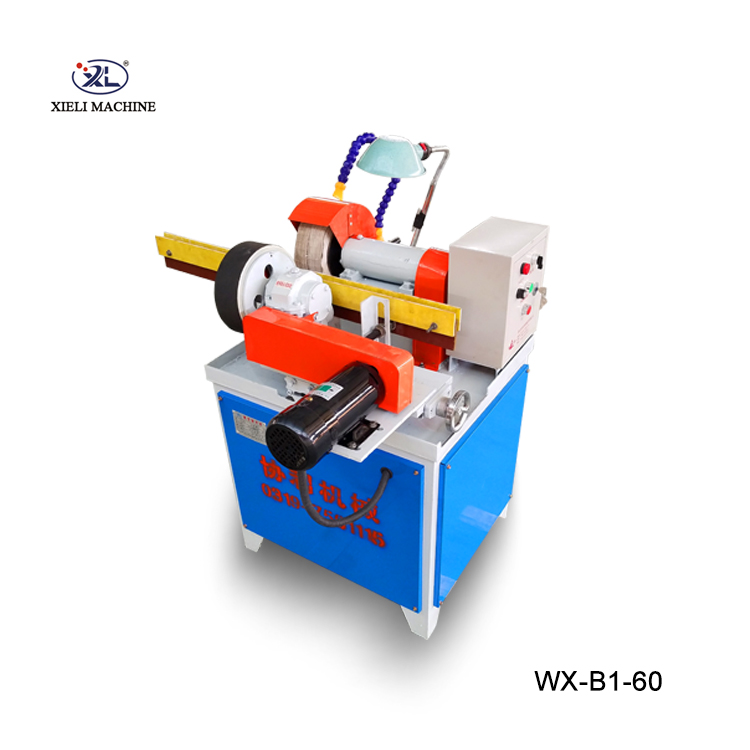
Key components, such as the grinding wheel spindle and regulating wheel spindle, are typically manufactured from high-alloy steels, often heat-treated and precision ground to achieve exceptional hardness and wear resistance. These spindles are then typically paired with high-precision hydrodynamic or hydrostatic bearings to ensure minimal runout and maximum rigidity, essential for maintaining sub-micron tolerances during grinding. All critical machine elements, including guideways and ball screws, are subjected to strict quality control, often adhering to international standards such as ISO 230-2 for machine tool accuracy and ANSI B7.1 for grinding wheel safety. The assembly process is performed in cleanroom environments to prevent contamination, and each machine undergoes extensive testing, including laser interferometry for linear accuracy and circularity tests for spindle runout. This rigorous approach in manufacturing the machine itself guarantees its robustness and ability to deliver consistent, high-precision results for a demanding industrial metal polishing machine environment, serving industries from petrochemical to automotive, where component integrity is non-negotiable and energy efficiency through reduced friction is a significant advantage.
Key Technical Parameters and Performance Metrics
Selecting the right centerless valve grinder for sale requires a thorough understanding of its technical specifications and performance capabilities. These parameters dictate the machine's suitability for specific applications, material types, and desired output quality. Critical specifications often include the grinding diameter range, which determines the size of workpieces the machine can process, and the grinding wheel dimensions, impacting material removal rates and surface finish. For instance, a typical precision valve grinder might handle diameters from 1 mm to 100 mm, with a grinding wheel diameter of 300-500 mm and a width of 100-250 mm. Power consumption of main and regulating motors, along with wheel speeds, are also crucial for operational efficiency and productivity.
Beyond these basic specifications, advanced models, such as an internal centerless grinding machine, offer features like automatic wheel balancing, in-process gauging, and adaptive control systems. These functionalities ensure consistent part quality by compensating for wheel wear and thermal expansion, minimizing manual adjustments, and maximizing uptime. The precision of these machines often translates into a surface finish that is not only visually superior but also functionally optimized for minimal friction and extended component lifespan, particularly relevant for applications demanding high energy efficiency and exceptional corrosion resistance. Manufacturers seeking to invest in a supertec centerless grinder for sale or similar high-end machinery must evaluate these detailed technical parameters to ensure the chosen system aligns perfectly with their production goals and quality requirements.
Technological Advantages and Application Diversity
The inherent design of centerless grinders offers several distinct advantages over other grinding methods. Its ability to process parts without requiring center holes or fixtures significantly speeds up loading and unloading times, leading to higher production rates. This continuous grinding capability is especially beneficial for high-volume manufacturing environments. Furthermore, the robust support provided by the work rest blade and regulating wheel minimizes workpiece deflection, resulting in superior roundness and cylindricity, even for long or delicate parts. This level of precision is critical for components like hydraulic pistons, medical implants, and, of course, engine valves, where geometric accuracy directly impacts performance and reliability.
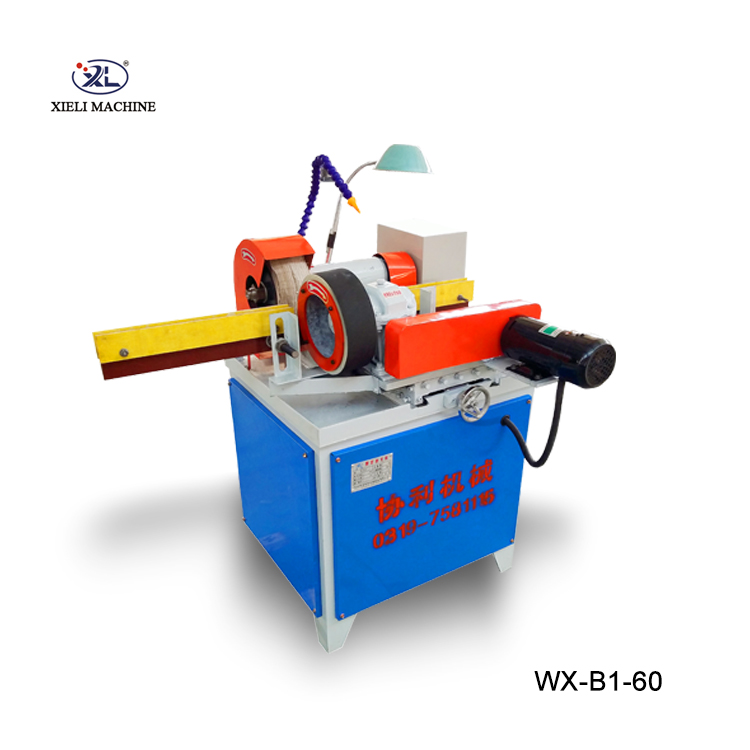
The versatility of the centerless valve grinder for sale extends to a wide array of industrial applications. In the automotive industry, it is indispensable for grinding engine valves, camshafts, crankshafts, and piston pins to exacting standards. The aerospace sector utilizes these machines for manufacturing turbine components, landing gear parts, and fasteners where ultra-precision and material integrity are paramount. Medical device manufacturers rely on centerless grinding for producing surgical instruments, prosthetics, and implantable devices with biocompatible surface finishes. Beyond these, the machines find use in the production of bearings, pins, rods, and various shafts across general engineering, fluid power, and consumer electronics industries. This broad applicability, coupled with the consistent output quality, solidifies the centerless grinder's position as a cornerstone technology in modern precision manufacturing, providing significant benefits in terms of both efficiency and product quality.
Manufacturer Comparison and Customization Options
The market for centerless grinding machines features a range of reputable manufacturers, each offering unique strengths, from highly specialized machines for niche applications to versatile models catering to broad industrial needs. Key players like the manufacturers behind the renowned paragon centerless grinding machine and van norman centerless grinder for sale have established reputations for innovation, durability, and precision. When evaluating options, buyers should consider factors such as the machine's control system (manual, semi-automatic, full CNC), automation capabilities (integrated loaders/unloaders, robotic cells), and specialized features for specific material types or part geometries. The choice often hinges on balancing initial investment costs with long-term operational efficiency and the required level of precision.
Beyond standard models, many manufacturers offer extensive customization options to precisely meet specific production requirements. This can range from integration of robotic loading and unloading systems for full automation, specialized grinding wheel compositions for difficult-to-machine materials, to bespoke software interfaces for complex grinding profiles. For companies seeking a table top centerless grinder for smaller, high-precision components or a heavy-duty viking centerless grinder for sale for large industrial parts, the ability to tailor the machine to exact specifications is a significant advantage. Experienced providers collaborate closely with clients to develop solutions that optimize throughput, minimize waste, and ensure the highest quality output, ensuring long-term value for the investment.
Real-World Applications and Success Stories
The practical impact of precision centerless grinding is best illustrated through real-world applications and customer success stories. For example, a leading automotive valve manufacturer transitioned to a fully automated centerless valve grinder for sale system, reducing their cycle time per valve by 30% while simultaneously achieving a 15% improvement in surface finish consistency. This not only boosted their production capacity but also significantly extended the lifespan and improved the sealing performance of their engine valves, leading to higher engine efficiency and reduced emissions. Such tangible results underscore the critical return on investment that advanced grinding solutions provide.
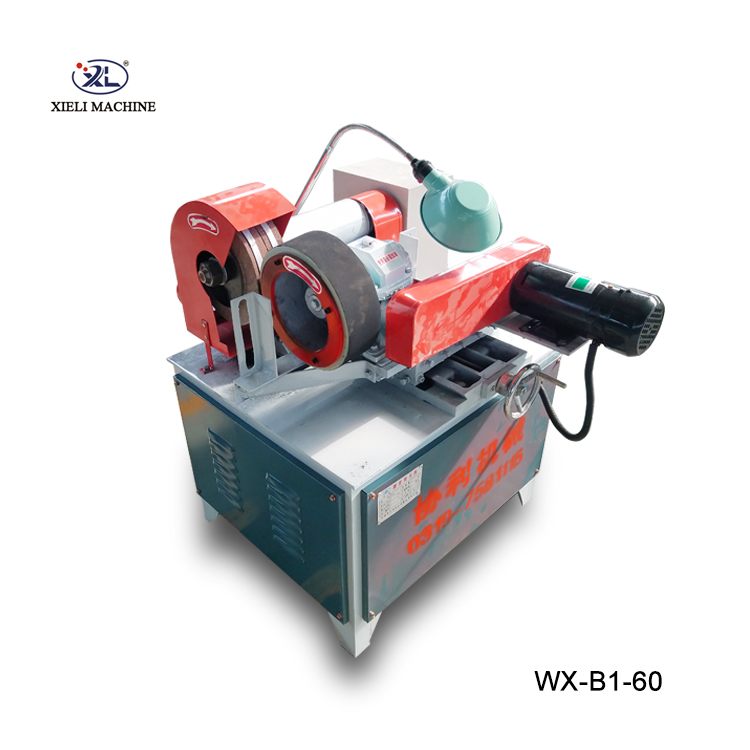
Another compelling case involves a medical device company producing precision surgical pins. Prior to implementing a high-accuracy van norman centerless grinder, they struggled with achieving the sub-micron tolerances required for their products, leading to high rejection rates. The new centerless grinding solution, with its superior control over concentricity and surface roughness, enabled them to consistently meet FDA-level quality standards, reducing scrap by over 60% and gaining a competitive edge in their specialized market. These examples highlight not just the technical prowess of these machines but also their transformative impact on operational efficiency, product quality, and market position. The adaptability of centerless grinding allows it to serve various industries, consistently delivering the precision necessary for high-performance components.
Ensuring Trust and Long-Term Partnership
In the B2B sector, trust is built on reliability, transparency, and robust support. When investing in a significant asset like a centerless valve grinder for sale, it's crucial to partner with a supplier that demonstrates undeniable expertise and authoritativeness. Our commitment to quality is underscored by adherence to stringent international standards, including ISO 9001:2015 for quality management systems, ensuring every machine is built to the highest specifications. We also comply with relevant safety and performance standards like CE marking for European markets and specific industry benchmarks where applicable. Our extensive experience, spanning over a decade in delivering advanced grinding solutions to global clients, is testament to our proven track record and deep understanding of diverse manufacturing challenges.

We offer comprehensive support packages designed to ensure seamless integration and long-term operational excellence. Our typical delivery timeline for standard machines ranges from 6 to 8 weeks, with detailed project management for customized solutions to ensure on-time commissioning. Every machine comes with a standard 2-year warranty on major components, reflecting our confidence in product durability. Post-warranty, we provide readily available spare parts and offer preventative maintenance programs to maximize machine uptime and performance. Our dedicated technical support team is accessible for troubleshooting, operational guidance, and remote assistance, ensuring that your investment continues to deliver peak performance throughout its lifecycle. We believe in fostering long-term partnerships built on mutual success and unwavering commitment to client satisfaction, whether you acquire a standard model or a specialized viking centerless grinder for sale tailored to your unique requirements.
Frequently Asked Questions (FAQ)
-
Q1: What materials can a centerless valve grinder process?
A1: Our centerless grinders are versatile and can effectively process a wide range of materials, including various grades of steel (e.g., stainless steel, tool steel, hardened steel), cast iron, aluminum, brass, ceramics, and specific composite materials, depending on the grinding wheel and machine configuration. -
Q2: What kind of surface finish can I expect?
A2: With optimal setup and tooling, our precision centerless grinders can consistently achieve surface roughness values (Ra) of less than 0.2 microns, and in some applications, even lower, meeting the demanding requirements for critical engine components and precision parts. -
Q3: How long is the typical lead time for a new machine?
A3: For standard models, the typical lead time from order confirmation to delivery is approximately 6 to 8 weeks. Customized machines or those requiring specialized configurations may have longer lead times, which will be communicated clearly during the quotation process. -
Q4: What after-sales support do you provide?
A4: We offer comprehensive after-sales support, including installation assistance, operator training, a 2-year warranty on major components, readily available spare parts, and responsive technical support via phone, email, and remote diagnostics. On-site support can also be arranged as needed.
Conclusion: The Future of Precision Valve Grinding
The evolution of the centerless valve grinder for sale reflects the ever-increasing demands for precision, efficiency, and automation in modern manufacturing. As industries continue to push the boundaries of material science and component performance, the role of advanced grinding technologies will only grow. Investing in a high-quality centerless grinding solution is not merely an equipment purchase; it is a strategic decision that empowers manufacturers to achieve unparalleled product quality, optimize production workflows, and secure a competitive advantage in a global market. By choosing the right partner and the right technology, businesses can ensure they are well-equipped to meet both current production needs and future industrial challenges, fostering innovation and driving growth through superior precision engineering.
References
- "Advanced Grinding Technologies for High-Precision Manufacturing." Journal of Manufacturing Processes, Vol. 15, Issue 3.
- "The Role of Centerless Grinding in Automotive Valve Production." International Journal of Machine Tools and Manufacture, Vol. 68.
- "Surface Integrity and Performance of Ground Components." Tribology International, Vol. 92.
- "Quality Assurance in Precision Engineering: ISO Standards and Their Impact." Quality Management Journal, Vol. 25, No. 1.
- "Emerging Trends in Automated Grinding Systems." Robotics and Computer-Integrated Manufacturing, Vol. 48.

